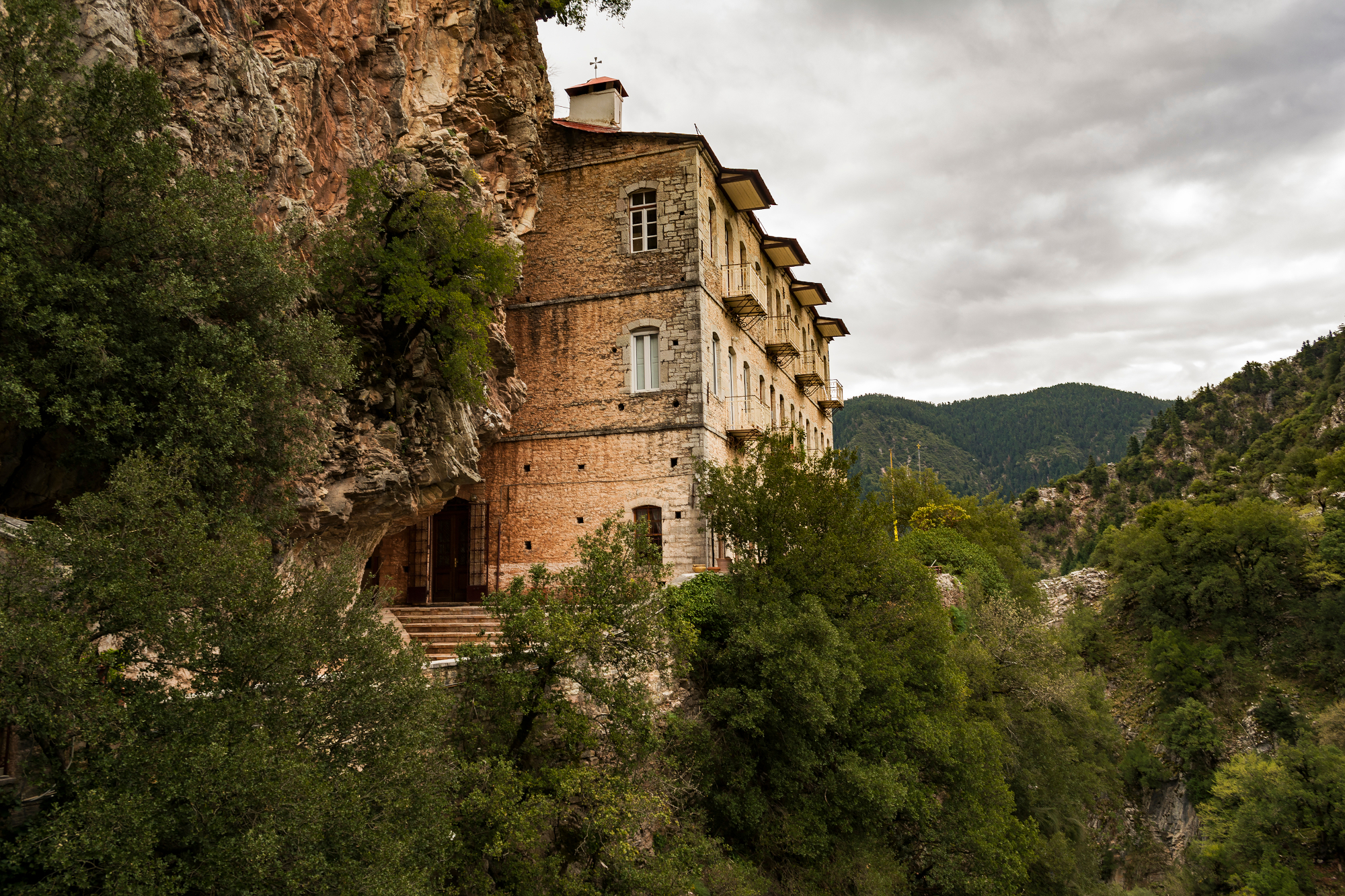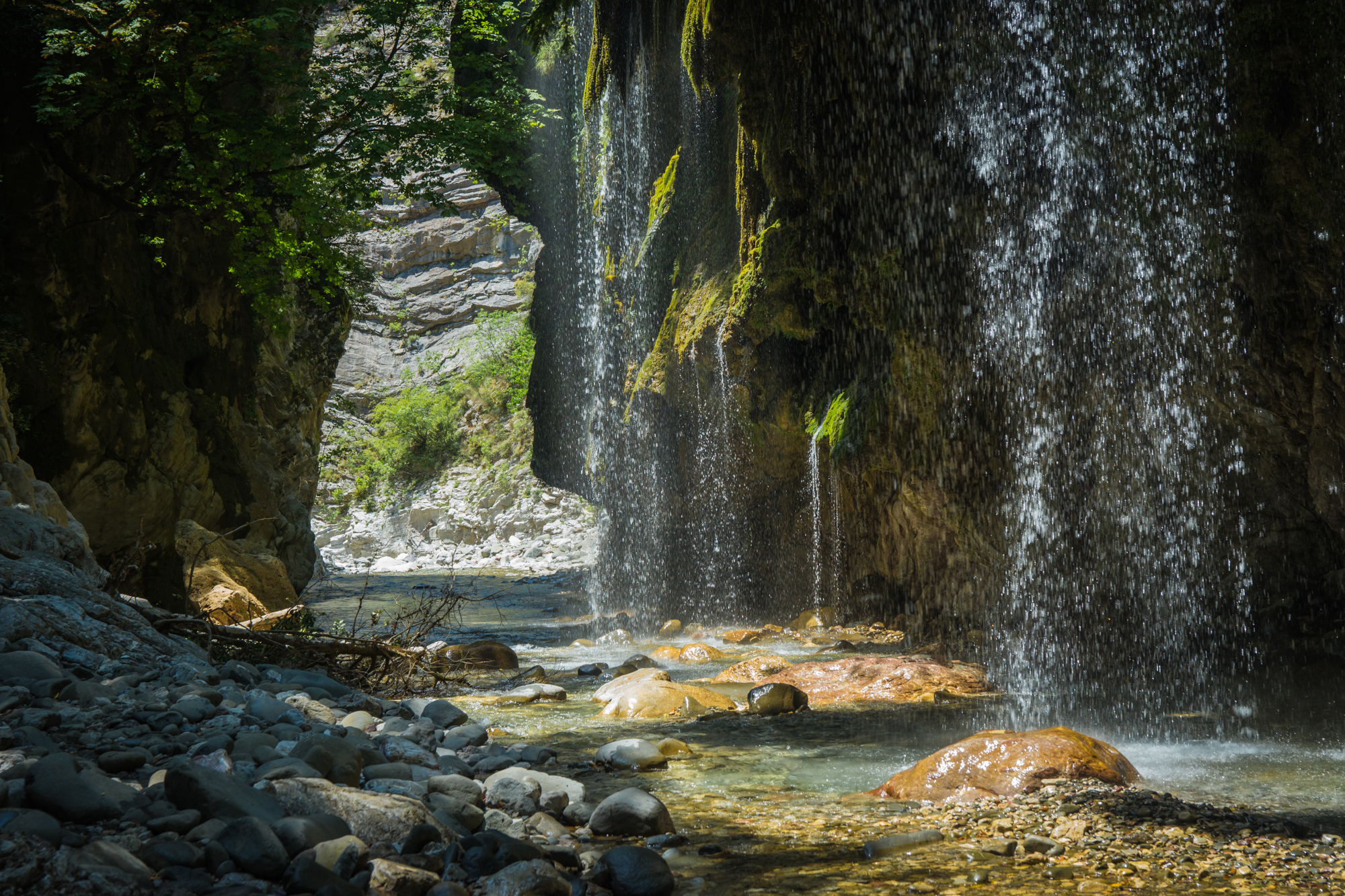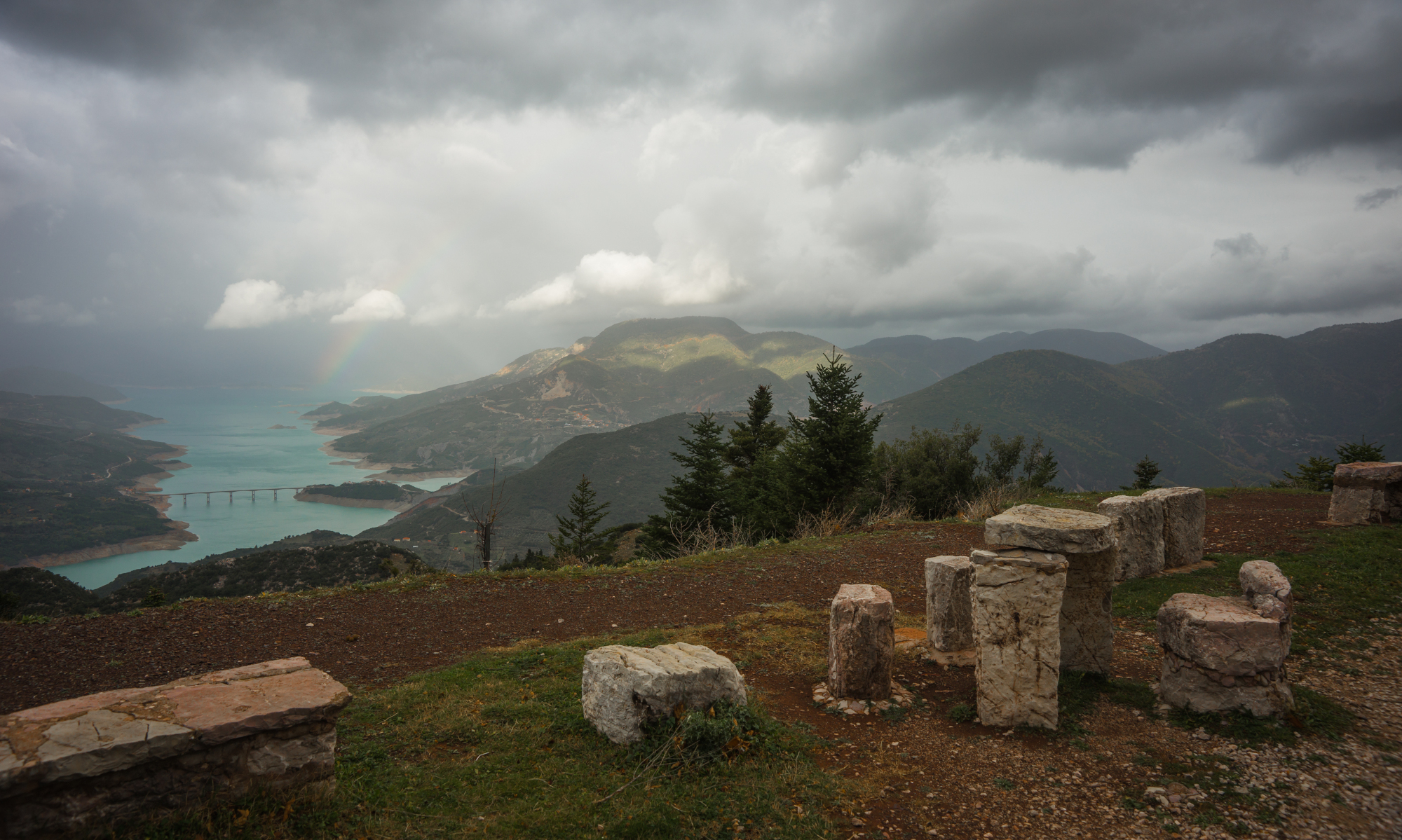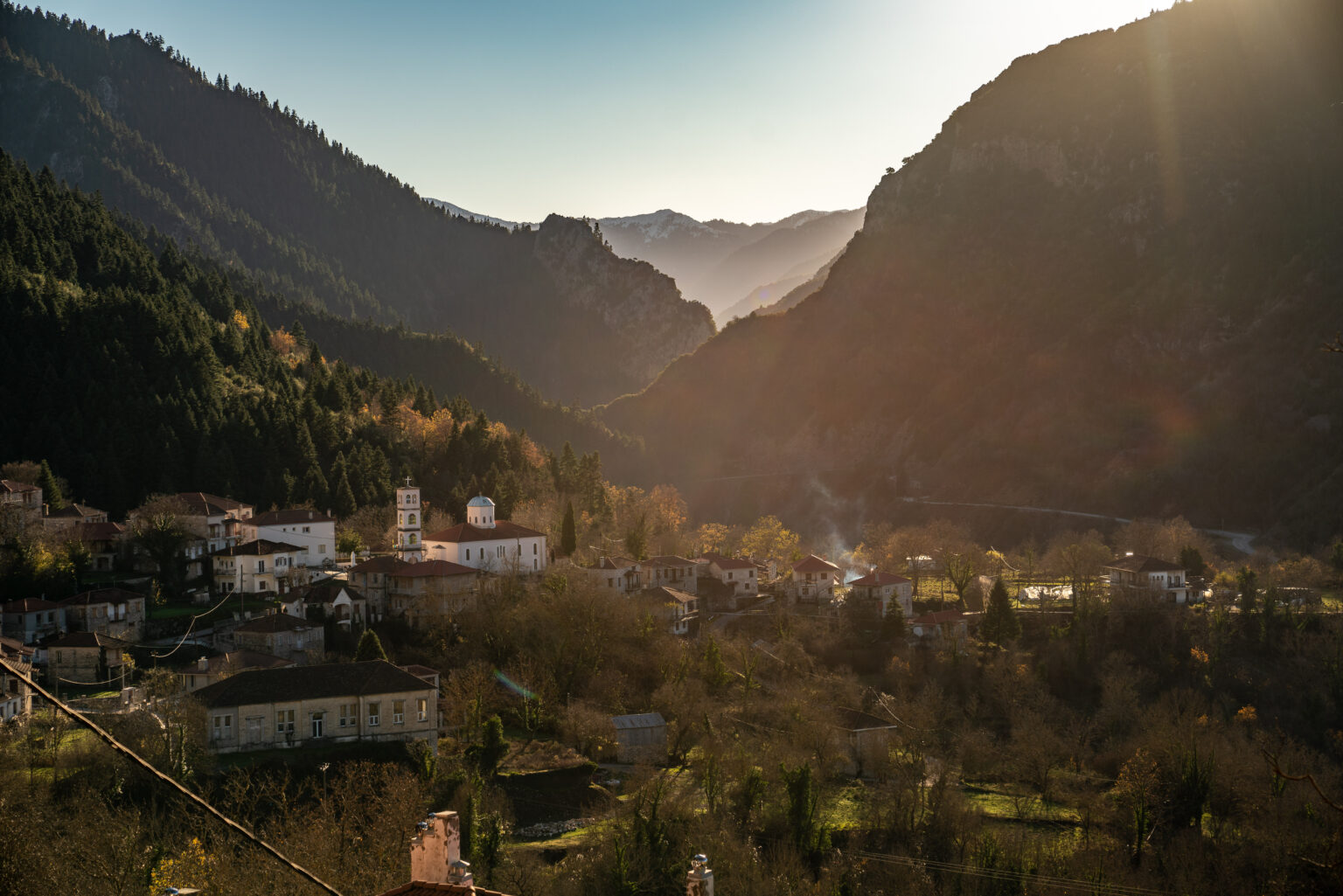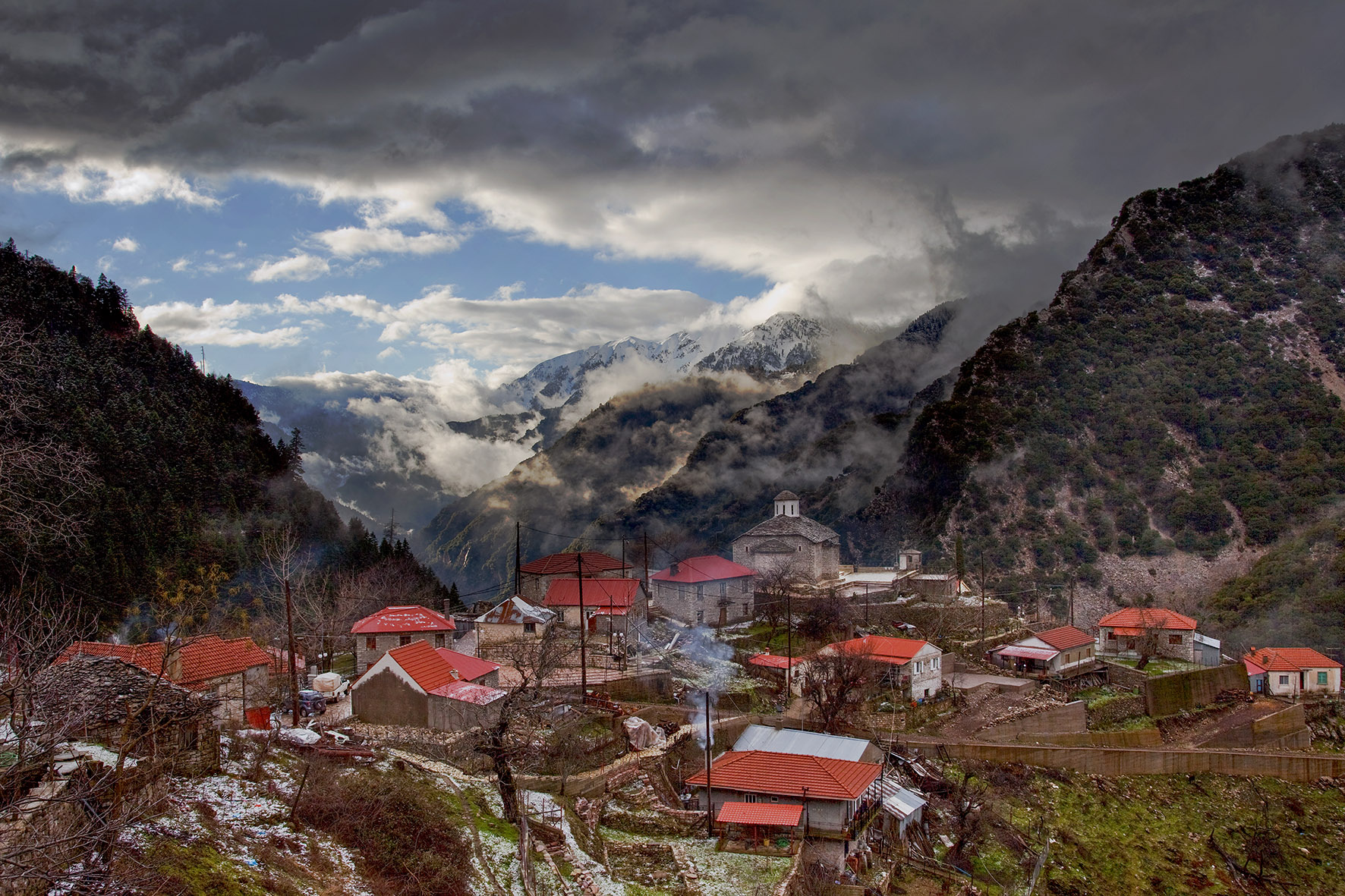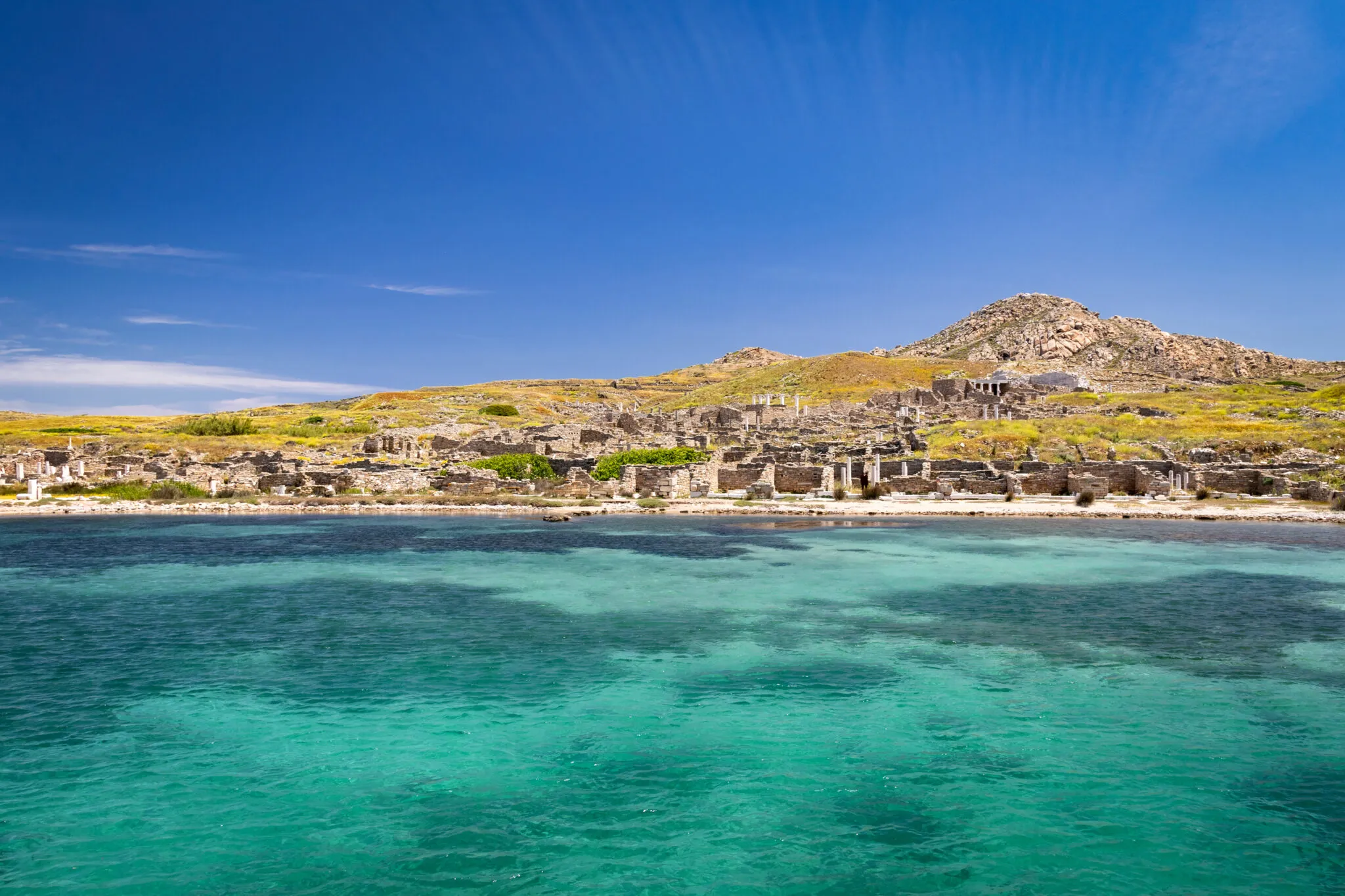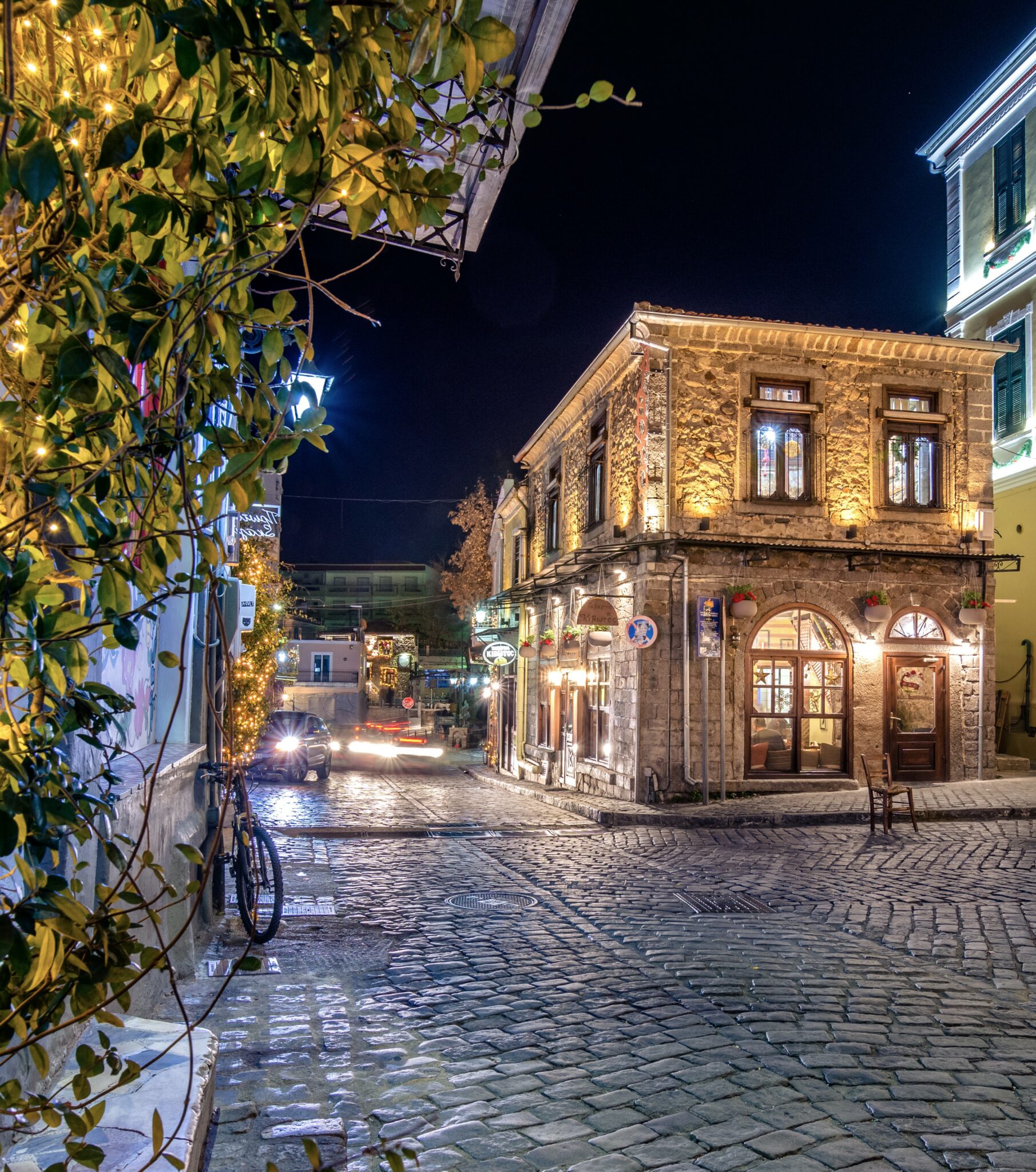On the road to Karpenisi, wherever you turn your gaze, you will notice that the landscape is bathed in dark shades of green, as the lush forests of spruce and fir overwhelm the area. How strange – the most sparsely populated prefecture of Greece seems to have the densest forests.
All shades of green, rugged slopes, high bald peaks, cool dew, rushing rivers, mountains that in some cases shroud the way.
In Evritania, nature is magical, and as in all untouched places, glorious. The alternating landscapes make up a beautiful puzzle, from which absolutely nothing is missing. The capital of Evritania is Karpenisi. Built on the slopes of Mount Tymfristos, it is famous for its stone-built square, Velouhi ski centre, its beautiful hotels, the heated pavements -which will not betray you in the first snow-, all those delicious traditional products you should take with you when you leave and the food that will warm your soul. Based in Karpenisi, you can organise excursions to the surrounding picturesque villages, the PantaVrehei (“Always Raining”) Canyon and Lake Kremaston. Test your limits by rafting on the rivers Trikeriotis and Tavropos and discover all their hidden secrets. Indulge in the thrilling experience of canyoning at Halikorema and climb the Black Cave. Visit the monastery of Proussos and the gorge of the area where a subspecies of the European Wildcat (Felis silvestris morea) and the Golden Eagle (Aquila chrysaetos chrysaetos) live.
History and legends have become one with the mountains of Evritania. These mountains have offered shelter to agonists both during the period of Turkish rule in Greece and during the German occupation, since, despite the Italian administration in Karpenisi, the other villages were still free. Also, during the same periods, many decisive battles have taken place here. In 1944, moreover, the first government of the mountains was formed in the village of Viniani that later called general elections throughout Greece. The National Council that emerged from these elections convened in the school of Koryschades village.
The fairy-tale villages of Evritania
Those who are lucky enough to visit Evritania often know that all the villages, big and small, even those not included in travel guides, have something unique to offer. However, if you are visiting the place for the first time, here are some of them, famous for their beauty and history.
Mikro & Megalo Horio (Village)
Two villages nestled among cornelian cherries, oaks, chestnuts and fir trees. About 12 km from Karpenisi, Mikro Horio (Small Village) consists of two settlements, the new and the old Mikro Horio, and is located on the road towards Proussos, at the foot of Mount Helidona. On 13 January 1963, a fatal landslide in the old Mikro Horio killed 13 villagers. The event haunted the village and prompted its residents to establish the new Mikro Horio a bit further away. There, the paved village square with its fountains overflowing with icy water is still a gathering place for locals; a place where they discuss everything from their joys and sorrows to politics.
The well-preserved mansions in Megalo Horio bear witness to the prosperity of the village. Picturesque alleyways, stone paths, fountains gushing cold water and taverns that serve local produce. It is worth visiting the folk museum and the main square of the village where you can enjoy your coffee. If you happen to be in Megalo Horio on Epiphany Eve, you will witness an impressive local custom, called “Kalimera” during which the men of the village gather in the afternoon and go out to sing carols. The money raised funds the big traditional feast of the village.
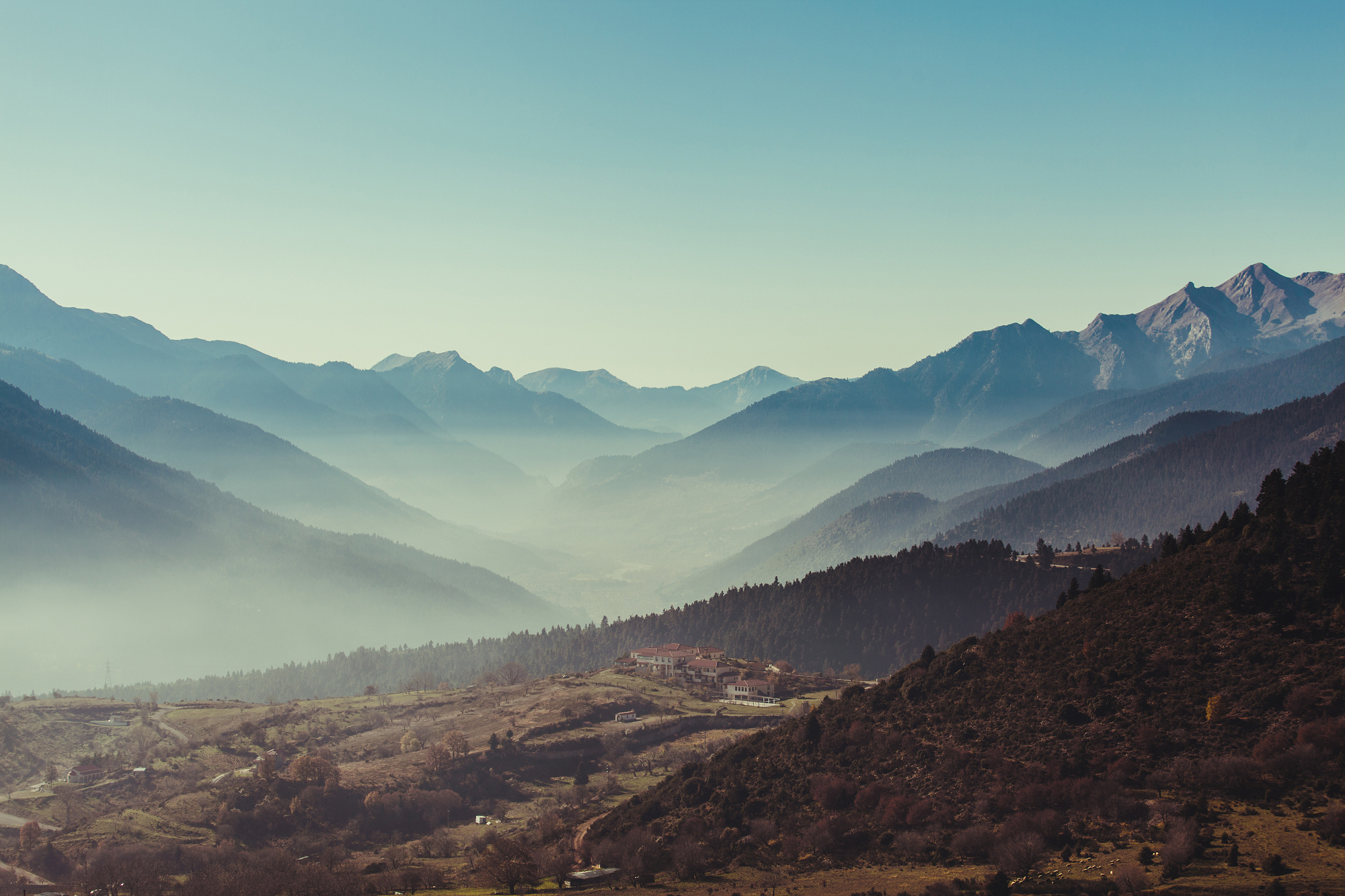
Koryschades
Try as one might, one cannot accurately describe the extent of the beauty of this small village that is literally perched on a hillside. Overlooking another green slope, the few stone “dollhouses” boast of the village’s history.
Going up to the village, which is located on the road to Proussos, 5 km from Karpenisi, you will first come across the Saloon activity park. Arriving in the village you will “stumble” upon the school where the first national assembly of the Greeks fighting to liberate the country was held. This site has been declared a historical monument and operates as a Museum of National Resistance. In the courtyard you can see the monument dedicated to that historic day. The Museum is open in the morning and afternoon. Sit in one of the cafés and taverns on the cobbled square and let your eyes rest on the fir-covered hillside in front of you, or stroll around the village and enjoy the crisp breeze.
Proussos
On the way to Proussos you will meet at one point a path with the so-called “footsteps of Virgin Mary” (Patimata tis Panagias). It is actually a geological phenomenon in which seven different coloured spots appear on a rock resembling footprints. According to some, these are the traces Virgin Mary left on her way to Proussos. Evidence confirms the existence of the monastery of Panagia Proussiotissa as early as the 12th century. The monastery is not only of religious interest, however, since in later years it provided a refuge for Greeks hunted by the Turks and later for the fighters hiding from the Nazis.
The monastery is about 30 km from Koryschades. From here it is also worth hiking to the gorge of Mavri Spilia (Black Cave), one of the most impressive in Greece. The cave has been a refuge for the locals during the Turkish rule, as well as the German occupation. Picturesque bridges, lush green scenery and a beautiful 10-meter-high waterfall will make up for the winding route. Don’t forget to stop by the deli of Stremmenos for some delicious local prosciutto.
Fidakia
Located 25 km away from Karpenisi, Fidakia is perhaps the most beautiful village of the prefecture. Its traditional architecture is its most characteristic feature and what makes it stand out from the other villages in Evritania.
Boasting slab-paved paths and elegant stone houses, Fidakia is built at an altitude of around 1000m above sea level, with mesmerizing views to Lake Kremaston. At the highest point of the village the remains of an ancient settlement can still be seen. It is rumoured that ancient Oihalia, once capital of Evritania, was located here.
Tornos
Located about 35 km away from Karpenisi, Tornos is immersed in greenery and practically hidden on a lush hillside. Utterly charming, the village owes its name to either the Greek word τορνευτός meaning shapely, graceful and voluptuous. Yet, according to a different interpretation, the name comes from the Greek word τόρνος which stands for “lathe”, namely a shaping tool. According to folk tales, there was once a craftsman in the village who was skilled in using the lathe.
What makes the village stand out is the number of berms where vineyards still grow. And although today’s wine production is nothing like the good old days, the wine’s excellent quality remains the same.
There are seven well-marked walking paths starting from here, taking you to the mountains through firs, cedars, plane trees and wild orchids. So, get ready to become one with nature. You can also visit the folk museum and the recently restored watermill.



